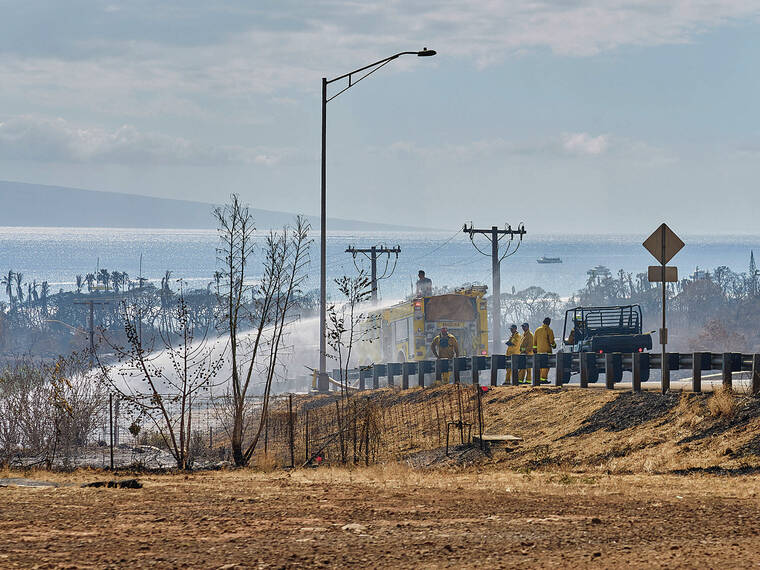Legislation seeks to continue flying isle homeless back home
People in Hawaii were outraged when the New York mayor’s office last year sent a homeless family to an unidentified island with a guaranteed job and a year’s worth of housing payments.
By comparison, since 2014, private and public Hawaii funds have paid for half of the airfare to send 744 homeless people back to their families on the mainland and to the Federates States of Micronesia — without any obligation from Hawaii of prearranged jobs or housing support. The homeless people’s families paid the other half of the airfare.
A bill before the state Legislature — House Bill 1945 Opens in a new tab — asks for $1.5 million in transient accommodations tax revenues to provide a dollar-for-dollar match to fundraising efforts led by the Hawaii Lodging and Tourism Association to pay for a wide variety of homeless-related projects, including flying homeless people out of the islands.
The so-called “repatriation program” is run on three islands by the Institute for Human Services on Oahu, Maui Family Life Center and Kauai Economic Opportunity.
The HLTA also wants to partner with a Hawaii island nonprofit organization to fly homeless people from the Big Island, said Mufi Hannemann, the HLTA’s president and CEO.
“This is part of the tool kit to deal with homelessness,” Hannemann said.
Don't miss out on what's happening!
Stay in touch with breaking news, as it happens, conveniently in your email inbox. It's FREE!
New York last year replaced Hawaii as having the nation’s highest per capita rate of homelessness. Hawaii now has the second-highest per capita rate of homelessness in the country. Opens in a new tab
Mayor Bill de Blasio’s New York program — called the “Special One-Time Assistance Program,” which sent the homeless family to Hawaii — provided the first real evidence of a well-entrenched urban myth that Hawaii’s homeless problem is driven by mainland cities, counties and states sending their homeless to Hawaii, Hannemann said.
When he was mayor of Honolulu, Hannemann repeatedly heard the allegation — without any evidence — that mainland governments were sending their homeless to Hawaii.
“I was never able to verify that,” Hannemann said. “I always heard that that was happening, but it was always anecdotally. No one actually identified how this was possible.”
In November, Lt. Gov. Josh Green told the Honolulu Star-Advertiser Opens in a new tab that de Blasio’s office verified to Green that it sent one homeless family to Hawaii last year, along with the guarantee of a job and one year’s worth of housing.
The development, Hannemann said, “cast a black eye on New York City from doing this blatantly, albeit it was only one family. It violated the spirit of aloha. … Most people didn’t like it. Obviously, we don’t want to see that practice continue.”
At the same time, Hannemann was unapologetic that Hawaii’s repatriation program has sent 744 homeless people — from Kauai, Maui and primarily Oahu — back to their families in Alaska, Colorado, Illinois, Maryland, Missouri, Montana, Oregon, New Mexico, Nevada, Texas, the Federated States of Micronesia and, mostly, California.
“A lot of them are coming out of California,” he said.
The bulk of the homeless who were flown out of Hawaii — 646 — were homeless on Oahu, and 16 later returned to Oahu, Hannemann said.
Another 68 were flown out of Maui, and 30 more were from Kauai, he said.
Many details remain unknown about the family that New York sent to Hawaii, such as whether they have island roots or family who welcomed them.
Hannemann said Hawaii’s repatriation program is different because it requires homeless people sent back to their homes to have family willing to accommodate them — and pay half of the airfare.
De Blasio’s office did not respond to repeated requests from the Star-Advertiser seeking more details of the family sent to Hawaii, such as whether they are from here, what island they landed at and the overall cost for New York to relocate them and others in the program, among several other questions.
On the other end, there are three rules that homeless people in Hawaii and their families have to meet in order to qualify to be reunited:
“A loved one, a family member, had to be identified on the other side,” Hannemann said. “Secondly, the individual had to be ready to go back. And thirdly, the message is, ‘We don’t want you to return.’
“Unless all that is done, you can’t just walk in and say, ‘I want a ticket to the mainland.’”
By the numbers:
>> 1: Number of homeless families flown to Hawaii through a New York City program in 2019
>> 744: Number of homeless people in Hawaii who were flown to their families on the mainland since 2014, including the Federated States of Micronesia
>> 16: Number of homeless people who returned to Oahu even though they were not welcomed back
>> 12: Number of states — including the Federates States of Micronesia — where Hawaii homeless people were sent
Source: Hawaii Lodging and Tourism Association




